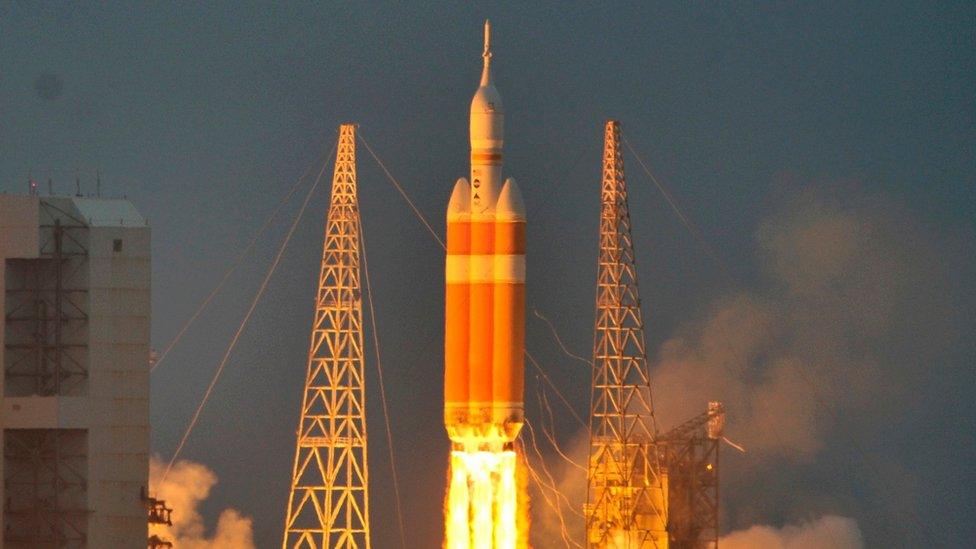Orion: Uncertainty ahead for new US spaceship
- Published
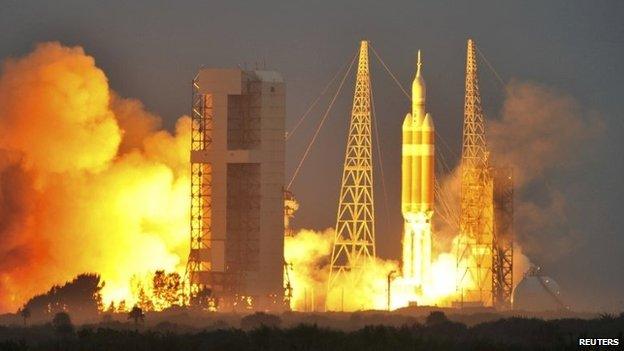
Orion has been tagged the "Mars ship"
To many, the launch of Nasa's next generation crew capsule, Orion, evokes the excitement of the Apollo era.
It's beefier and uses cutting edge technologies, but Orion strongly resembles the Apollo command ships that ferried astronauts to the Moon and back in the 1960s and 70s.
But there's something missing. In the 1960s, Nasa had a very clear target: the Moon. Somehow, Orion has been tagged the "Mars ship". But there is no tangible race to the Red Planet as there was to the Moon in the 60s and no hard-and-fast deadline like that set by JFK.
Nasa's chief scientist Ellen Stofan says the launch sets America "on that journey to Mars". But she adds that: "Getting to Mars is tough... we're trying to break the problem into each of the technologies we need to develop."
The next step in the problem is testing Orion's new rocket - the Space Launch System (SLS) - in 2018. But then Nasa will need to design and test a transfer ship to carry the astronauts on the 16-month round trip.
Then there is the thorny problem of protecting humans from cosmic radiation they will be exposed to on the way, as well as getting astronauts down and then back up from the surface. Without a real political imperative to get there soon, those technologies are going to take years if not decades to develop.
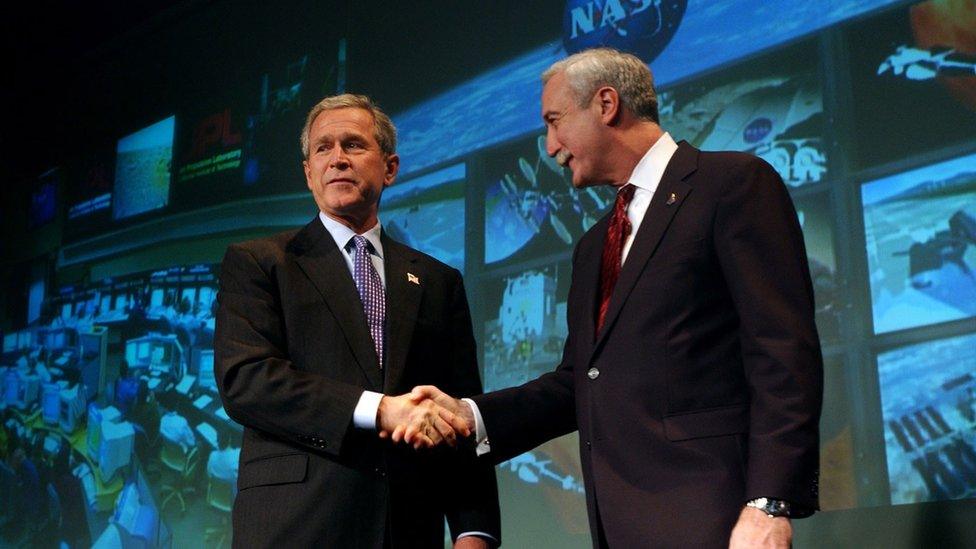
President George W Bush announced the Constellation programme in 2004; Nasa's then administrator Sean O'Keefe is seen on the right
Programme resurrected
Orion started off as the "Moon ship" under George W Bush's Constellation plan to get Americans back to the lunar surface by 2020.
After entering office, President Obama initially ordered the scrapping of the entire Constellation programme. It was the height of the worldwide financial crisis and finding the money to continue with an over-budget, under-schedule programme that was closely associated with his Republican predecessor was probably not a top priority for the new president.
"This is like a death in the family," said Nasa chief Charles Bolden in 2010, after the cancellation of the multi-billion-dollar programme was announced. But scrapping Constellation meant scrapping jobs, and the president soon ran into fierce political opposition from members of Congress representing districts that were home to Nasa centres.
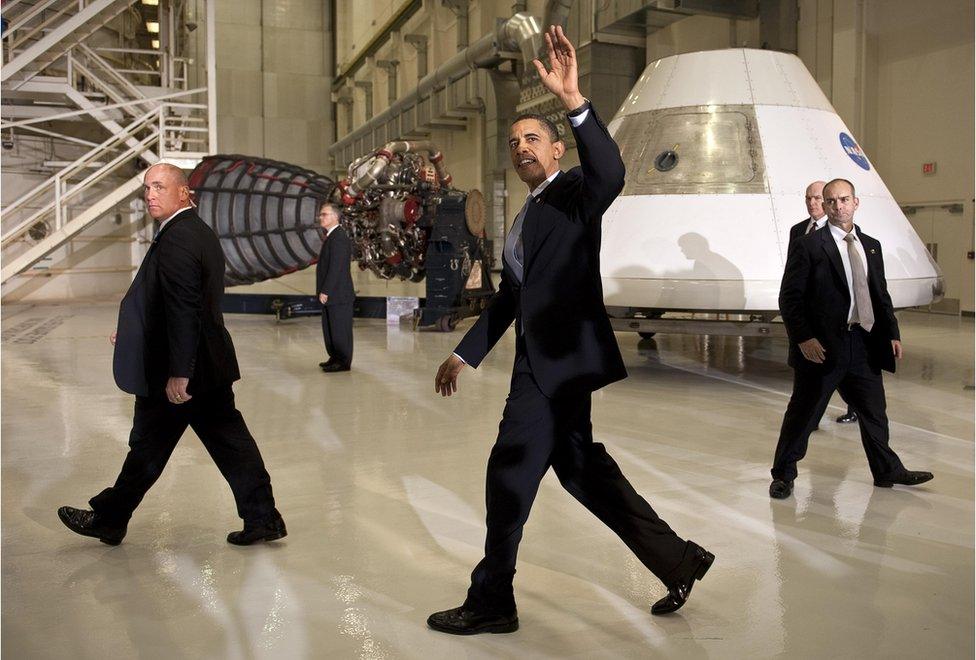
New direction: President Obama re-set the target from the Moon to Mars in a speech at Kennedy Space Center in 2010
In April 2010, under pressure from Congress, Obama resurrected the space vehicle - with some design changes - and announced a package of measures to help workers at the Kennedy Space Center in Florida find jobs after the retirement of the space shuttle.
Thus, the Orion Crew Exploration Vehicle (CEV) was re-born as the Multi-Purpose Crew Vehicle (MPCV) - swiftly switched back to "Orion" after the fuss had subsided.
As for the other elements of Constellation: the Ares I rocket, its heavy-lift counterpart Ares V, and the Moon lander Altair - they were to get no reprieve.
Going to Mars
Obama reiterated that Constellation's path was "unsustainable" and promised to begin work by 2015 on a new heavy lift rocket - later named the SLS - to launch Orion into space.
But what was Orion going to do now that landing on the Moon was off the table? Obama decided to go one better than President Bush, and announce that America was going to Mars.
Now, the Moon was an achievable goal in the near term, given sufficient funding. A cynic might say that setting Mars as the goal cleverly kicked the problem into the long grass - since the technologies needed to mount a successful round trip to the Red Planet were nowhere near mature.
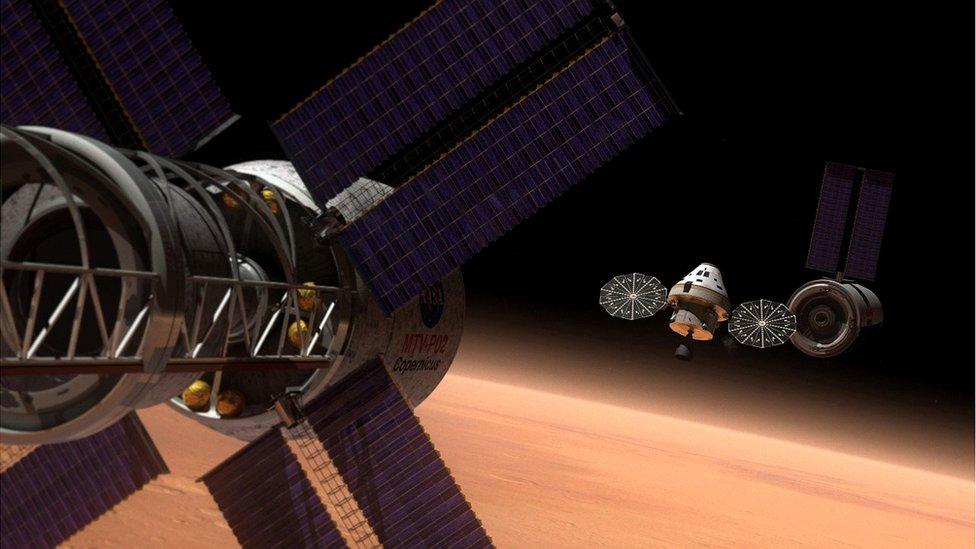
Nasa hopes the Orion spacecraft will play a role in its goal of sending humans to Mars (artist's impression)
At the same time, going to Mars has long been the dream of many in the space community. And it appears that the sight of a president announcing a manned programme to Mars was enough to assuage some of the criticism.
Even under the Constellation plan, going back to the Moon would have served as a proving ground where astronauts were to have learnt to "live off the land" in preparation for an eventual trip to the Red Planet.
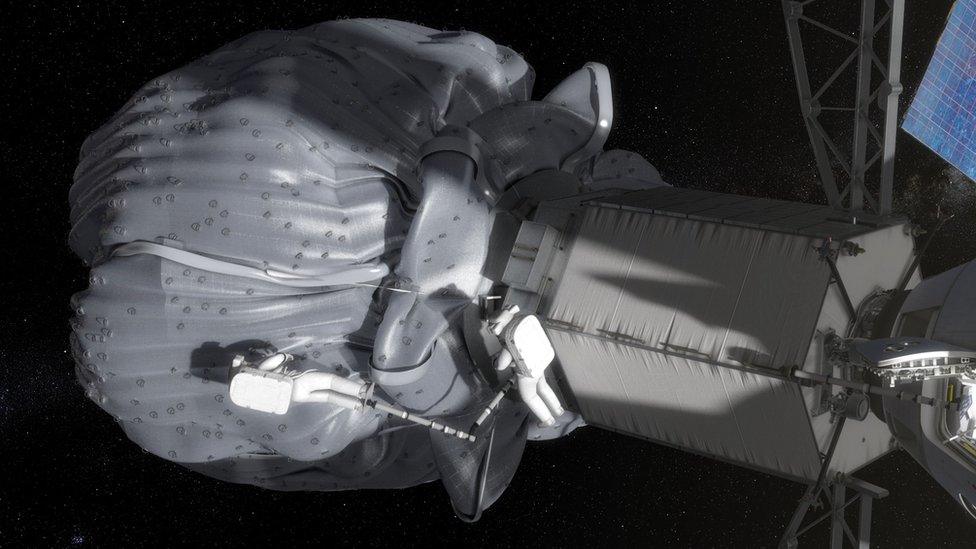
Orion could also be used to visit an asteroid that has been captured and "bagged"
Capture asteroid
But nearly five years on, as President Obama approaches the end of his presidency, the question of what to do with Orion - at least while those all-important Mars technologies are being developed - has come around again.
Among the proposals being talked about is for Orion to visit an asteroid that has been previously captured and redirected by a robotic mission - either a small rock that is surrounded by a bag in space, or lifted off the surface of a larger body.
But those weren't the focus of talk around Friday's launch. The latter proposal has already proven controversial in the media, and - in any case - the "asteroid bagging ship" probably doesn't have quite as much of a ring to it. Thus, Orion was designated the "Mars ship".
But let's not kid ourselves; we're going to be waiting a long time before we see the stars and stripes being planted in the red Martian soil.
Follow Paul @rincon_p, external on Twitter
- Published5 December 2014
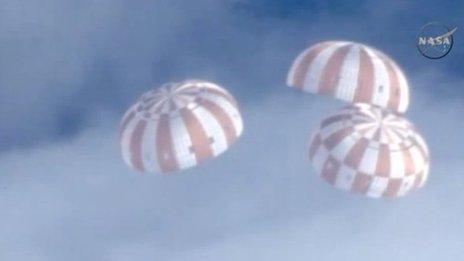
- Published5 December 2014
